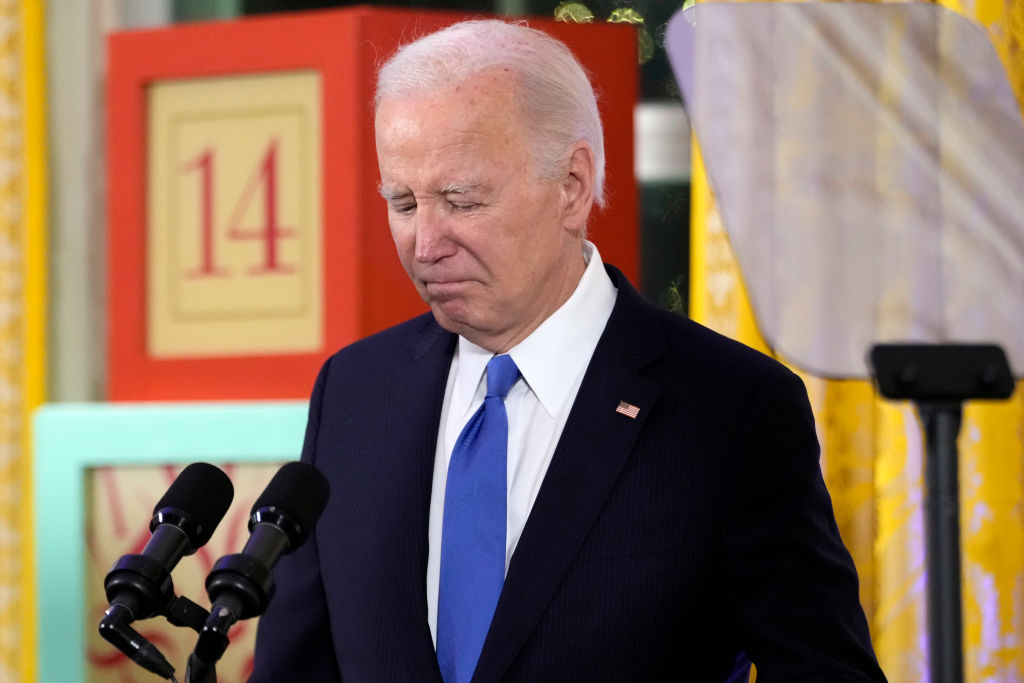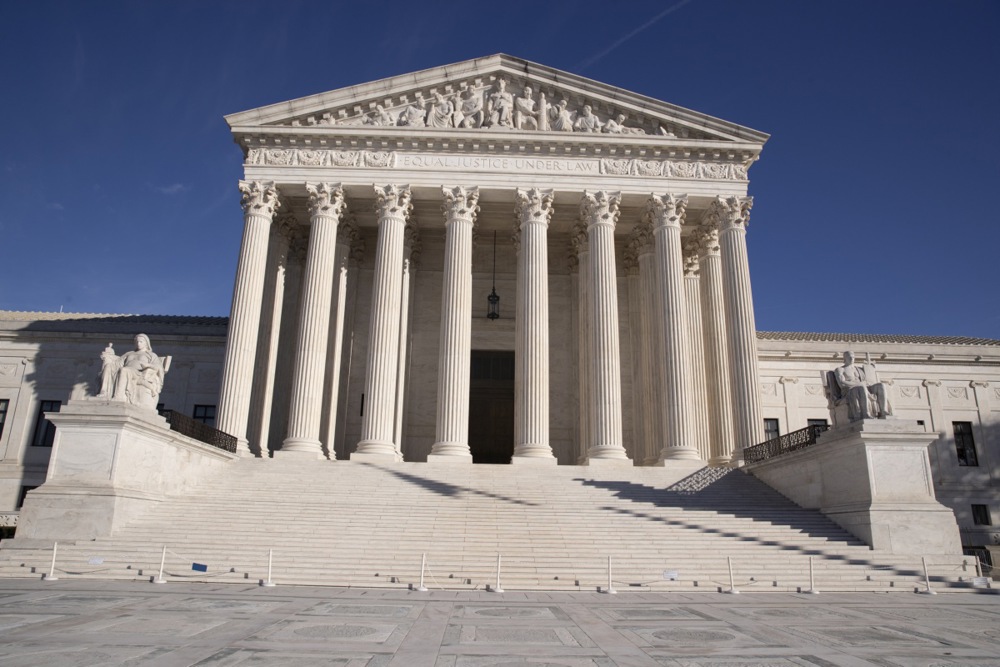The GOP’s quixotic quest for the Hispanic vote is as old as the concept of the “Hispanic vote” itself. Every election cycle, like clockwork, Republicans trot out a long line of pollsters, consultants, and political operatives to assure anyone within earshot that this will be the year that Hispanics go red; and every election cycle, like clockwork, Democrats clean up a decisive 60 to 80 per cent of Latino voters nationwide.
In the 1980s, Ronald Reagan famously predicted that “Hispanics are already Republican. They just don’t know it yet”. Four decades later, they still don’t appear to have realised. In 2020, Trump secured an estimated 38 per cent of the national Latino vote — a gain of as much as 10 points from his showing in 2016, but still below his party’s historic ceiling of about 40 per cent. In 2022, after months of confident noises about Latino voters from the GOP — and a slate of implausible polls showing a significant swing toward Republicans within the voting bloc — the margins barely budged: Just 39 per cent of Latinos broke for Republicans in U.S. House races, compared to 60 per cent who went for Democrats.
These numbers shouldn’t be particularly surprising to anyone who has been paying attention. The alleged high-watermark for Hispanic support for the GOP came in 2004, when George W. Bush — who made a point of campaigning in broken, Texan twang-inflected Spanish, running Spanish-language ads, and promising a kinder, gentler approach to immigration than the one favored by his party’s predominantly white base — won as much as 44 per cent of the demographic. But exit polls from that cycle are highly contested, and competing estimates for Bush’s margins with Latino range from the high of 44 to a low of 33 per cent. In 2008, John McCain carried an anaemic 31 per cent of Latinos; in 2012, Mitt Romney won an even less impressive 27 per cent. Trump’s showing in 2020 may have been an improvement on the GOP’s Obama-era slump, but it provided little reason to suspect a broader sea change in Latino voting patterns.
It’s not for want of trying. Going into 2020, the Trump campaign diverted an exceptional amount of time and resources to targeting both black and Hispanic voters, rolling out a “Platinum Plan” for black Americans and the “American Dream” plan for Hispanic Americans, promising hundreds of billions of dollars to revive their communities and a series of other identity-driven policies, the political analyst Ryan Girdusky noted in the American Conservative. When all was said and done, Joe Biden ended up carrying about 60 per cent of Latinos and a whopping 92 per cent of the black vote. Meanwhile, Trump saw his largest decline in support among “white voters, particularly white men,” according to a postmortem analysis from Trump pollster Tony Fabrizio.
The same was true in 2022: In the leadup to the midterms, the Republican National Committee opened dozens of new minority-outreach community centres across the country, and turbocharged its outreach and voter-registration efforts in heavily Hispanic areas. The results were less than impressive: Despite widespread predictions of a historic red wave, Republicans were trounced in competitive state and national races across the country, carrying the House by the narrowest margin in decades and ceding a critical Senate seat to Democrats.
Down ballot, Democrats flipped state legislatures in a number of important swing states, and maintained or expanded their majorities in others, representing the first time since 1934 that the president’s party did not suffer the loss of a single state legislative chamber. At least part of that was due to the fact that turnout among non-college-educated white voters — the GOP’s strongest demographic — declined relative to the rest of the electorate.
None of this has dampened the GOP’s child-like optimism about the prospect of a new, multiracial Republican coalition. Once again, going into 2024, conservative commentators are predicting that “The Republican Party is going to win BIG with Hispanics in 2024”. Once again, a slate of dubious polls show implausibly strong Hispanic support for Republicans. Once again, the GOP is organising a political strategy on the premise that there’s an untapped, Republican-in-waiting Hispanic voting bloc waiting in the wings.
To be candid with readers: I used to be more optimistic about the prospect of a “Hispanic realignment” than I am today. In fact, my current sobriety about the topic — or cynicism; mileage may vary — is the result of years of in-depth coverage of the GOP’s Latino outreach strategy, including a trip down to the heavily Hispanic South Texas to report on the issue in the run-up to the midterms. Leaf through my old articles, and you’ll undoubtedly find more than a few bullish takes on the possibility of a Hispanic Republican majority.
But it has become increasingly difficult to ignore the cold, hard political reality. In spite of exhaustive Republican efforts, electoral returns continue to remind us where the GOP’s real voter base lies — and the opportunity cost of neglecting them. White voters comprised 88 per cent of Trump’s voters in 2016 and 85 per cent in 2020, and made up a similar 88 and 85 per cent of the GOP coalition in the 2018 and 2022 midterms, respectively.
The GOP’s ability to mobilize whites — and more recently, whites without a college degree in particular — has been the defining factor in its electoral performance for at least half a century. (Lyndon B. Johnson was the last Democratic presidential candidate to win an outright majority of the white vote). The most resounding Republican victories in modern history — Richard Nixon in 1972 and Ronald Reagan in 1984 — have come when whites voted as a bloc for the GOP: Nixon’s 1972 landslide was delivered with 67 per cent of the white vote, and Reagan’s 49-state blowout with 64 per cent.
There are, it should be noted, important geographic variations to this discussion. In states like Florida, Republicans have overperformed their national margins — and occasionally even won outright — with Hispanics, in part due to the heavily Cuban composition of the state’s Latino population. In others, like California, Republicans have historically performed even worse with Latinos than the national average. (As of 2020, just 16 per cent of California’s likely Latino voters were registered with the GOP). A political strategy that accounts for this regional diversity would be more profitable for Republicans than their current one-size-fits-all “Hispanic outreach” agenda.
But as a national matter, Republicans who would actually like to win elections would be well-served to hunt where the ducks are. The GOP’s obsessive quest to make its coalition less white, even if it comes at the cost of its own political prospects, sometimes verges on a self-destructive psychological complex — a desperate, and ultimately pointless, effort to immunize itself against the allegations of racism lobbed at conservatives by powerful left-wing institutions. That racial insecurity was evident in former GOP speaker Kevin McCarthy’s recent remarks bemoaning the fact that Democrats “actually look like America,” whereas Republicans “look like the most restrictive country club in America”.
Beyond the obvious moral and political problems with McCarthy’s not-so-subtle barb at the racial character of his own party’s base, the former speaker’s comments were indicative of the fundamental problem with Republican thinking in this area: “Diversity” does not win elections. Votes do. It doesn’t take a scholar of electoral history to notice where the vast majority of GOP votes come from. Republicans might consider a political approach that doesn’t involve dismissing, denigrating, and running away from the very demographic that sustains their party’s existence.





Post-Gaza, wokery on American campuses is at last being challenged. But the cure might make matters worse